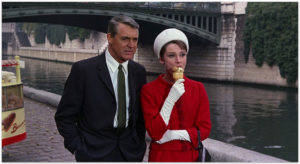One of my pet peeves is stories that don’t take location into account. Think about it: cities are as distinctive as people. The pace, the climate, the geography, the architecture, all of these things give each city something akin to a personality and this, in turn, means that they affect people differently. Sometimes in an extreme way (Jerusalem Syndrome, for instance); sometimes more subtly. New York City for instance is very intrusive. Even though it’s undoubtedly true that you can become very isolated and lonely here, as soon as you walk out the door, something’s apt to happen. There’s such a constant assault on the senses that, for good or for ill, your plans are apt to change in a way that wouldn’t happen in, say, L.A. This is not to say that L.A. doesn’t exert a psychological force in people’s lives; the effect is just entirely different. A city, in other words, can be as much of a character as the flesh and blood ones.
Don’t just write a story that could take place anywhere. One big problem I had with “Friends” was that it didn’t strike me as authentically New York in the way that Seinfeld did. Both shows were taped in Los Angeles, but Seinfeld rang true in a way that Friends didn’t. If you’re setting your story in a particular place, think about the constraints that city places on its inhabitants. Limits are part of what drives a plot. For inspiration, here are some great movies that effectively use their locale as an essential character. As a side note, by portraying the city so vividly, the filmmakers also managed to capture a very particular time in its history. After all, cities change and evolve just like people do.
Paris – Charade (1963)
 This Stanley Donen thriller starring Audrey Hepburn and Cary Grant is not only terrific fun, it also makes great use of Paris. From the deftly executed subway chase sequences, to the climactic scene in the park, down to the detail of the antiquated building elevators, here’s one story that could only take place in Paris. This is definitely part of its charm. You feel as if you were experiencing a slice of that glamorous city.
This Stanley Donen thriller starring Audrey Hepburn and Cary Grant is not only terrific fun, it also makes great use of Paris. From the deftly executed subway chase sequences, to the climactic scene in the park, down to the detail of the antiquated building elevators, here’s one story that could only take place in Paris. This is definitely part of its charm. You feel as if you were experiencing a slice of that glamorous city.
New York – Rear Window (1954)
This is justifiably recognized as one of Alfred Hitchcock’s many masterpieces. It takes place at the height of a balmy summer in New York’s Greenwich Village. Hitchcock had a very elaborate set built and yet every detail authentically captures this particular neighborhood. There’s no whitewashing some of the realities of living in this city. I love the fact that Jimmy Stewart’s apartment is tiny and that from his window he can peer straight into his neighbors’ lives. Few cities force one to live side by side with people of such drastically different social classes as New York. This movie is a perfect example of what I mean about the city’s intrusiveness. And while it is as much a portrait of New York in the 50s, some things here never change; voyeurism is still as much a fabric of the Gotham experience as ever.
Brooklyn – Do The Right Thing (1989)
Spike Lee’s tour-de-force is now a time capsule about a Brooklyn neighborhood on the verge of gentrification during one particularly fraught and scorching summer. Lee didn’t just achieve this through location and scenery, though; his unerring sense of place is also informed by his in-depth and loving portrait of the characters who inhabit the hood. They ARE Brooklyn, and he’s able to depict the tragedy and comedy of their interactions because he shows us the humanity beneath the recognizable stereotypes. Lee’s genius lies in his ability to capture the true flavor of this rich ethnic brew without pandering to caricature. And in anchoring his story in time and place, he is able to make a larger statement about humans’ tragic inability to see past the veneers.
